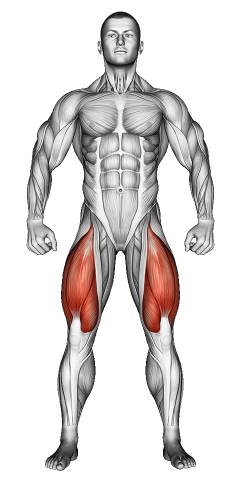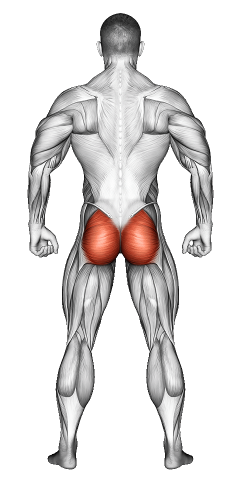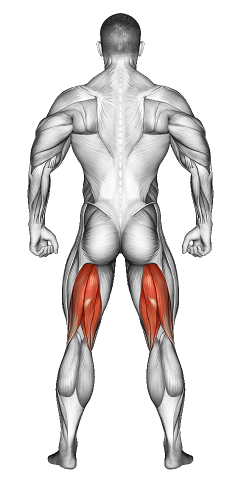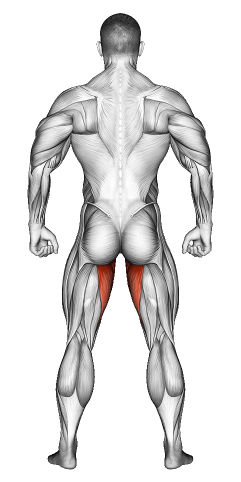Side Lunges: Video Tutorial & Exercise Guide

Written By: Claude Michael
Updated: Dec 26, 2024
| Workout | Side Lunges |
| Primary Muscle Group | Quads |
| Secondary Muscle Group | Glutes, Hamstrings, Adductors |
| Equipment Required | None |
| Force Type | Bodyweight |
| Mechanics | Compound |
| Exercise Type | Lower Body Strength |
| Difficulty | Beginner |
Side Lunges: Video Tutorial & Exercise Guide
Secondary Muscles Group
Side Lunges: Step-by-Step Guide
- Step 1: Stand up straight with your feet togClaude and engage your core. Keep your shoulders relaxed and your chest lifted. This is your starting position.
- Step 2: Take a big step out to your right side. As you plant your foot, bend your right knee and push your hips back, keeping your left leg straight. Lower yourself until your right thigh is nearly parallel to the floor. Keep your chest up and your weight in your heels.
- Step 3: Press through your right heel to push yourself back to the starting position. Focus on driving through your glute and keeping your balance.
- Step 4: Repeat the movement on your left side. Take a big step to the left, bend your left knee, and push your hips back. Keep your right leg straight and feel the stretch along your inner thigh.
- Step 5: Alternate sides, moving smoothly from right to left. Keep your core tight and move with control. Avoid rushing to maximize each rep's effectiveness.
Side Lunges: Overview
Side Lunges target your glutes, inner thighs, and quads, helping you build lower body strength and flexibility. This exercise also improves your balance and stability as you work each leg individually. Perfect for beginners, Side Lunges help develop strength in the legs and add variety to your lower body routine. By practicing Side Lunges, you’ll notice greater mobility and strength in your daily movements.
Side Lunges: Benefits
Side Lunges build strength and flexibility in your lower body. By working your glutes, quads, and inner thighs, you’ll increase stability and balance. This movement challenges your hips and legs in a different way from traditional lunges, making it a great addition to any leg workout. Side Lunges also help improve lateral movement, which can enhance performance in sports and everyday activities.
Side Lunges: Pro Tips & Advanced Techniques
- Focus on Your Hips: Push your hips back as you lunge to engage your glutes and keep your knee aligned. This helps protect your knees and targets the right muscles.
- Control Your Movement: Avoid bouncing. Move smoothly and steadily, focusing on lowering yourself in a controlled manner.
- Add Weight for Challenge: Once you’re comfortable, hold a dumbbell in each hand or a kettlebell at chest level to increase resistance and make your glutes and thighs work harder.
- Breathe Steadily: Inhale as you step out, and exhale as you push back to the center. This rhythm keeps you focused and controlled.
Side Lunges: Progression Plan
Beginner
Intermediate
Advanced
Side Lunges: Frequently Asked Questions (FAQs)
What muscles do Side Lunges work?
+Side Lunges primarily target the glutes, inner thighs, and quads, improving lower body strength and flexibility.
Can I add Side Lunges to any workout?
+Yes! Side Lunges work well as part of any leg or full-body workout. Add them to strengthen your lower body and improve balance.
Will Side Lunges improve my hip flexibility?
+Definitely. Side Lunges stretch and strengthen your inner thighs and hips, increasing flexibility and range of motion.
How often should I do Side Lunges?
+Include Side Lunges in your routine 2-3 times a week, especially on days focusing on leg strength.
What mistakes should I avoid?
+Avoid letting your knee collapse inward. Keep it aligned with your toes and push your hips back to protect your knees and maximize muscle engagement.
Share
Don’t Wish for It, Work for It – Join the FlexXP Newsletter Today!
Thank you for signing up for the FlexXP Newsletter!
This site is protected and the Google Privacy Policy and Terms of Service apply.



